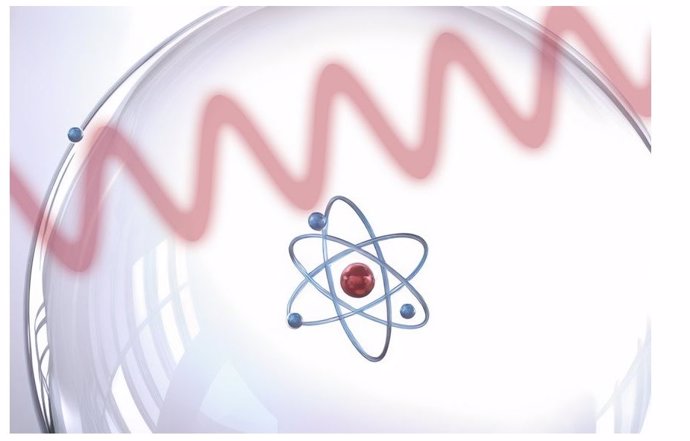The new time crystal responds to an extremely exotic state of matter. – YOUR WIEN
9 Jul. () –
At Tsinghua University in China, with the support of the Technical University of Vienna, a type of time crystal made of giant atoms has been created.
The team used laser light and special types of atoms, specifically Rydberg atoms, with a diameter several hundred times larger than normal. The results have been published in the journal Nature Physics.
A crystal is an arrangement of atoms that repeats itself in space at regular intervals: at every point, the crystal looks exactly the same. In 2012, Nobel Prize winner Frank Wilczek posed the question: could there also be a time crystal – an object that repeats itself not in space, but in time? And could it be possible for a periodic rhythm to emerge, even if no specific rhythm is imposed on the system and the interaction between particles is completely independent of time?
For years, Frank Wilczek’s idea caused a lot of controversySome considered time crystals to be impossible in principle, while others tried to find loopholes and make time crystals under certain special conditions.
SPONTANEOUS BREAKING OF SYMMETRY
The ticking of a clock is also an example of periodic motion in time. However, it does not occur on its own: someone must have wound the clock and set it in motion at a certain time. This start time then determines the timing of the ticks.
In the case of a time crystal, things are different: According to Wilczek’s idea, a periodicity should arise spontaneously, even though in reality there is no physical difference between different points in time.
“The frequency of the ticks is predetermined by the physical properties of the system, but the moments at which the ticks occur are completely random; this is known as spontaneous symmetry breaking,” he explains. it’s a statement Professor Thomas Pohl of the Institute of Theoretical Physics at the Technical University of Vienna.
Pohl was responsible for the theoretical part of the research that has now led to the discovery of a time crystal at Tsinghua University (China): a laser light was shined into a glass container filled with a gas of rubidium atoms. The intensity of the light signal reaching the other end of the container was measured.
“This is actually a static experiment in which no particular rhythm is imposed on the system,” explains Pohl. “The interactions between light and atoms are always the same, the laser beam has a constant intensity. But surprisingly, it turned out that the intensity reaching the other end of the glass cell is much lower than that of the other end of the glass cell.” begins to oscillate in very regular patterns.”
The key to the experiment was to prepare the atoms in a special way: the electrons in an atom can travel in different paths around the nucleus, depending on the amount of energy they have. If energy is added to the outermost electron in an atom, its distance from the atomic nucleus can become very large.
In extreme cases, it can be several hundred times farther from the nucleus than usual. This creates atoms with a giant electron shell, the so-called Rydberg atoms.
“If the atoms in our glass container are prepared in those Rydberg states and their diameter becomes enormous, then the forces between these atoms also become very large“, explains Pohl.
“And that, in turn, changes the way they interact with the laser. If you choose the laser light in such a way that it can excite two different Rydberg states in each atom at the same time, you create a feedback loop that causes spontaneous oscillations between the two atomic states. This, in turn, also leads to oscillating light absorption.”
On their own, the giant atoms stumble in a regular rhythm, and this rhythm translates into the rhythm of the intensity of the light reaching the end of the glass container.
“We have created a new system that provides a powerful platform for deepening our understanding of the time crystal phenomenon in a way that is very close to Frank Wilczek’s original idea,” says Pohl.
“Precise, self-sustained oscillations could be used for sensors, for example. Giant atoms with Rydberg states have already been used successfully for such techniques in other contexts.”









![[Img #74808]](https://thelatestnews.world/wp-content/uploads/2025/01/Wooden-satellite-in-orbit-150x150.jpg)



![[Img #74808]](https://thelatestnews.world/wp-content/uploads/2025/01/Wooden-satellite-in-orbit-300x200.jpg)

Add Comment